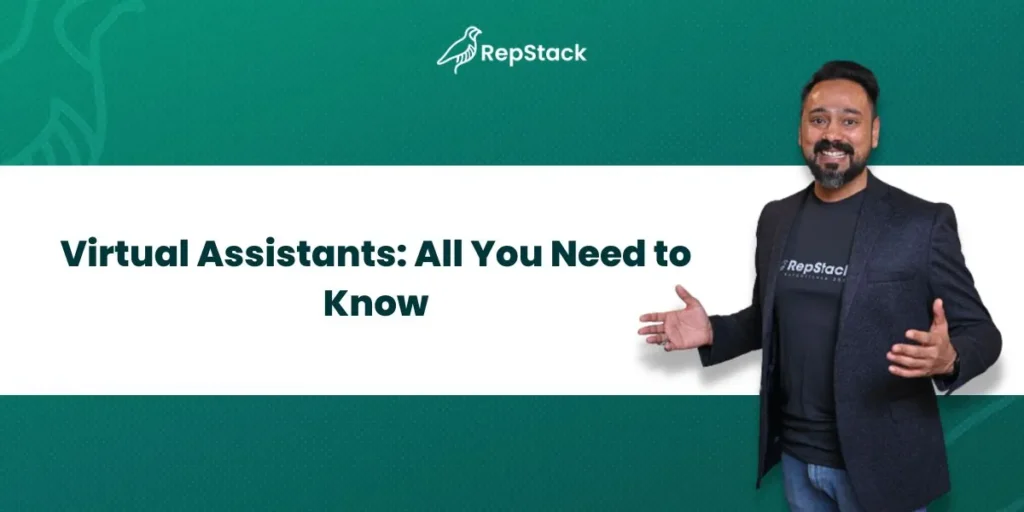“Virtual Assistants: Revolutionizing Workplaces”
Introduction

In present-day energetic digital environment, the way we work and interact with technology has evolved dramatically. At the center of this shift are virtual assistants (VAs), which have swiftly evolved from simple voice-activated tools into powerful AI-driven entities that are transforming modern staff. These artificial intelligence (AI)-driven bots and software programs, or virtual assistants, have become indispensable components of our daily lives, enhancing productivity, streamlining tasks, and providing human experiences.
The Development of Virtual Assistants
Virtual assistants have been available before the beginning of the 2000s, when program to recognize voices started to become popular. Early examples are Apple’s Siri, which debuted in 2011, and Microsoft’s Clippy, the famous assistant shaped like a piece of paper. These first versions were crude and usually had few features. The Development of Virtual Assistants
That said, they created the way for the more advanced virtual assistants of today.
The development of virtual assistants gained greatly from advances in NLP (natural language processing) and machine learning. These assistants are able to read and respond to discussions in a more rational and conversational manner using natural language processing (NLP). The shift from simple command-based contacts to more conversational, human-like interactions has greatly enhanced the user experience and raised the usefulness and accessibility of virtual assistants in a range of contexts.
Virtual Assistant Types
You can broadly divide virtual assistants into two groups: personal and business..
Personal Virtual Assistants
The goal of personal virtual assistants is to assist clients with daily duties. Among these assistants are Cortana from Microsoft, Google Assistant, Alexa, and Siri from Apple. These might include making lists, placing online orders, providing weather updates, setting alerts and reminders, and even controlling smart home equipment. Making daily tasks so that users can concentrate on more important areas of their lives is the primary goal of personal virtual assistants.
Our daily lives are incorporating these helpers more and more, particularly with the rise of smart devices. For numerous users, personal virtual assistants have become necessary due to their capacity to operate household appliances, retrieve information, and even conduct transactions via straightforward voice prompts.
Business Virtual Assistants
On the other hand, business virtual assistants support professional tasks.
AI-powered chatbots have also grown to be a big component of company operations in recent years. Frequently working without human assistance, these virtual assistants answer questions from clients, find solutions to problems, and deliver information. Instant responses from this automation improve client experience while also saving time.
Advantages of Virtual Assistants
There are several advantages to using virtual assistants in both personal and business contexts..
Improved Production
The productivity boost that virtual assistants offer is among the biggest benefits of employing them. Virtual assistants give up time for people and employees to concentrate on more important duties by automating repetitive tasks. A commercial virtual assistant, for instance, can handle calendar management, email filtering, and task summaries, freeing up staff members to focus on strategic work.
Virtual assistants can do repetitive chores like making grocery lists and scheduling appointments in personal settings, freeing up users’ time for more enjoyable or important activities. For efficient time management, the capacity to assign tasks of any size is revolutionary.
Cost Efficiency
Virtual assistant work has the ability to save organizations a lot of money. It can be pricy for small firms or startups who employ a full-time administrative assistant. A less expensive option are virtual assistants, especially ones powered by AI. Their versatility allows them to perform a greater number of jobs with fewer employees and reduced operating expenses.
Additionally, AI-driven virtual assistants provide around-the-clock accessibility, ensuring timely completion of business activities and consumer concerns, even beyond regular business hours. This 24/7 accessibility can boost client happiness and increase the general effectiveness of company operations.
Personalized Experience
Virtual assistants are getting better at offering individualized experiences. They can customize their responses and actions to meet the demands of specific users by examining user data and preferences. For example, a virtual assistant may make product recommendations based on past purchases or suggest a certain commute route based on traffic patterns.
Virtual assistants can use consumer data analysis in a commercial setting to deliver tailored marketing messages or product recommendations that increase engagement and conversion rates. The increasing expectation of customized experiences among users and consumers has made this degree of personalization a crucial difference in both personal and professional contexts.
Difficulties and Fears

Although virtual assistants have many advantages, there are a number of issues and worries that come with their broad use.
Security and Privacy
Privacy is one of the main issues with virtual assistants. These gadgets and programs frequently require a large amount of personal data, including contacts, browsing history, and location, to function properly. Collecting this data raises concerns about how the information is used, stored, and shared.
The fact that many virtual assistants, particularly those found in smart speakers, are constantly listening has also sparked worries about potential eavesdropping and unlawful recordings. There is always a possibility that consumer data could be exploited, even while the company guarantees that it is secure and used only to improve services.
Businesses using virtual assistants also have security concerns. If there are breaches in data security protocols or if the virtual assistant is compromised, confidential company information may be compromised. For developers and businesses alike, ensuring the security of virtual assistants and the protection of user data is a constant problem.
Dependency and Trustworthiness
Es gibt immer mehr Bedenken darüber, dass man zu sehr von virtuellen Assistenten abhängt, da diese Tools immer mehr in den Alltag integriert werden. Nutzer riskieren, zu stark auf virtuelle Assistenten angewiesen zu sein, um grundlegende Aufgaben zu erledigen. Dies könnte zu einer Verringerung der menschlichen Interaktion oder zu einem Rückgang der kognitiven Fähigkeiten führen.
Also, virtual assistants are not flawless even though they are typically dependable.Errors or frustrations may result from technical difficulties, ambiguities in language processing, or inadequate knowledge bases. In critical business situations, reliance on a virtual assistant that fails to perform as expected can have significant consequences.
Ethical Considerations
The rise of virtual assistants driven by AI also brings up moral concerns. One example of a job displacement problem is the automation of tasks that were formerly performed by humans. As virtual assistants become more skilled, there’s a danger that some jobs—particularly those in administration or customer service—will diminish or disappear.
Moreover, the biases of the people who created the virtual assistants are reflected in the code. These biases have the potential to affect how virtual assistants interact with users and produce unfair or discriminating results if they are not carefully handled.
Virtual Assistants’ Potential Futures
Virtual assistants may benefit heavily from latest advances in machine learning, artificial intelligence (AI), and natural language processing (NLP). It’s conceivable that as AI assistants develop, they’ll be more seamlessly incorporated into both personal and professional settings.
We might think that virtual assistants will become more alert in the future and be able to read and follow complex directions. Thanks to developments in emotion recognition technologies, virtual assistants may be able to recognize and react to users’ emotional states, maybe resulting in interactions that are more supportive and caring.
Virtual assistants also have a lot of chances to go into new sectors like healthcare and education.. Virtual assistants could help physicians with disease diagnosis and patient data management in the healthcare industry. In the educational sector, they could provide students with individualized teaching and support..
But as virtual assistants develop, it will be crucial to address the issues and worries that come with using them Keeping privacy, security, and ethical standards high will be essential to maintaining user confidence and maximizing the benefits of these powerful tools.
Conclusion
Since they began as simple voice-activated devices virtual assistants have come a long way. These days, they are essential parts of the modern workstation, offering a variety of benefits in terms of success, cost, and customization. As virtual assistants advance, they will change the way we use technology and work, becoming a more important part of our daily routines.
But as they get more common, it becomes more important to think about the challenges they provide, including potential over-dependence, issues with privacy, and ethical challenges.. We can guarantee that virtual assistants continue to be a positive influence in our lives and at work by resolving these problems..
FAQs:
1. What is a virtual assistance?
An artificial intelligence (AI) tool or software program that can do tasks, offer solutions, and manage information on a user’s behalf is called a virtual assistant (VA). Both professional and personal assistance is provided, such as email management, appointment scheduling, and customer service, in addition to personal assistance like taking notes and handling smart gadgets.
2. What kinds of virtual assistants are there?
Two primary categories of virtual assistants exist:
- Personal virtual assistant: They are powered by AI devices that help with everyday tasks. These are formed by Siri on Apple devices, Apple Assistant, Google Assistant, Microsoft Cortana, and Amazon Alexa.
- Virtual assistants for businesses: They can handle admin jobs, customer service, and other duties. They work well in professional environments. Examples include chatbots, transcription services like Otter.ai, and CRM applications like Salesforce’s Einstein.
3. How are virtual assistants employed?
Virtual assistants use machine learning, artificial intelligence (AI), and natural language processing (NLP) techniques to read and follow human demands.. After processing text or voice inputs and contextual analysis, they carry out activities or deliver information as needed. They can eventually gain knowledge from user interactions to provide more tailored responses.
4. How might employing a virtual assistant benefit you?
Using a virtual assistant has several main advantages, such as:
- Enhanced Productivity: Virtual assistants save up time for more crucial duties by automating repetitive operations.
- Cost-effectiveness: Virtual assistants, particularly in corporate environments, can minimize the need for extra employees, which lowers operating expenses.
- Personalization: By using user preferences and previous exchanges as a basis, virtual assistants can offer customized experiences.
5. Are virtual assistants secure to use?
Security differs based on the platform and the user’s precaution . With the fact that most virtual assistants have safety features in place to secure user data, issues over privacy and data theft exist. Users must follow the suggested safety measures, which involve turning on two-factor authentication and regularly checking their privacy setting. ALSO READ:Recognizing Cybersecurity: Protection Our Digital World




